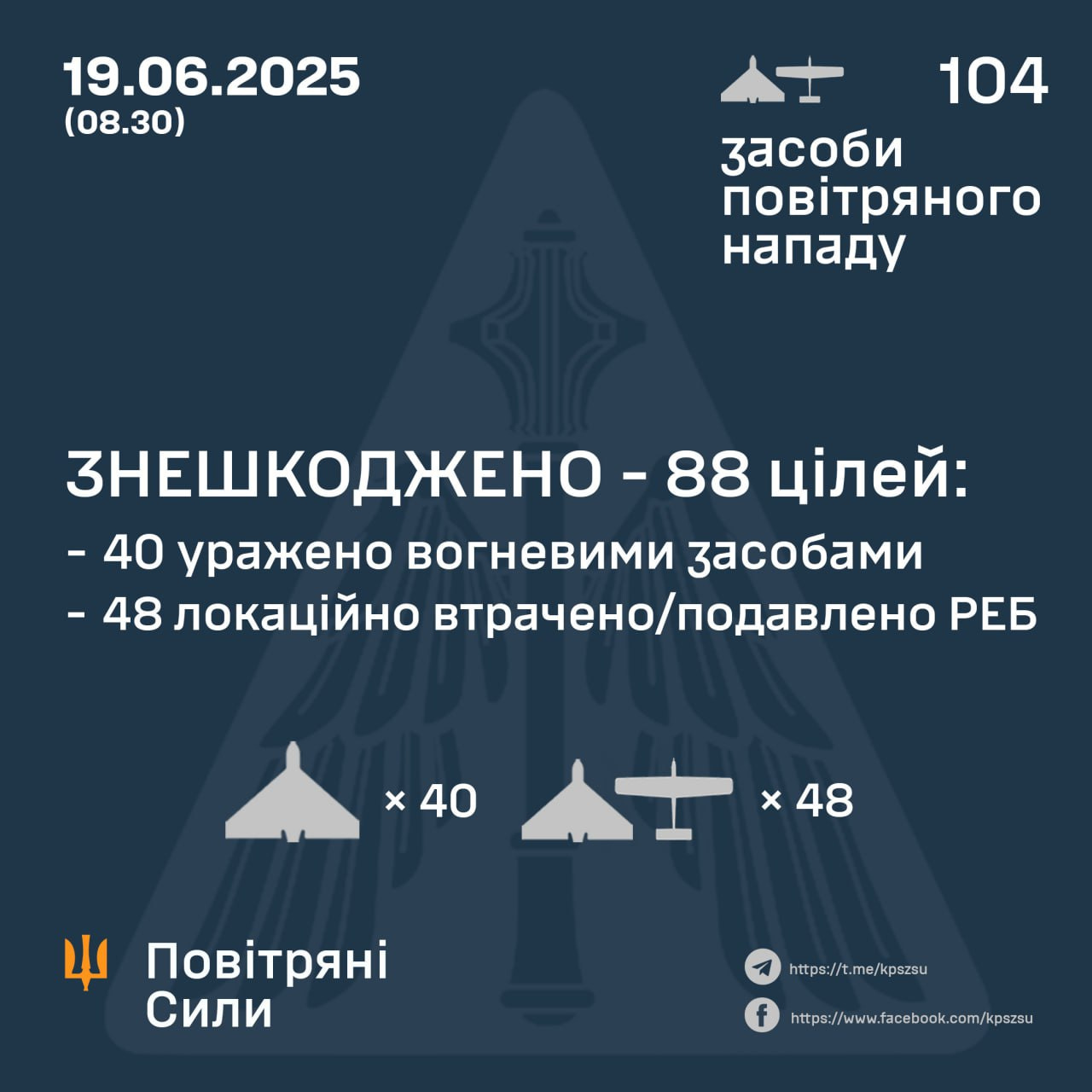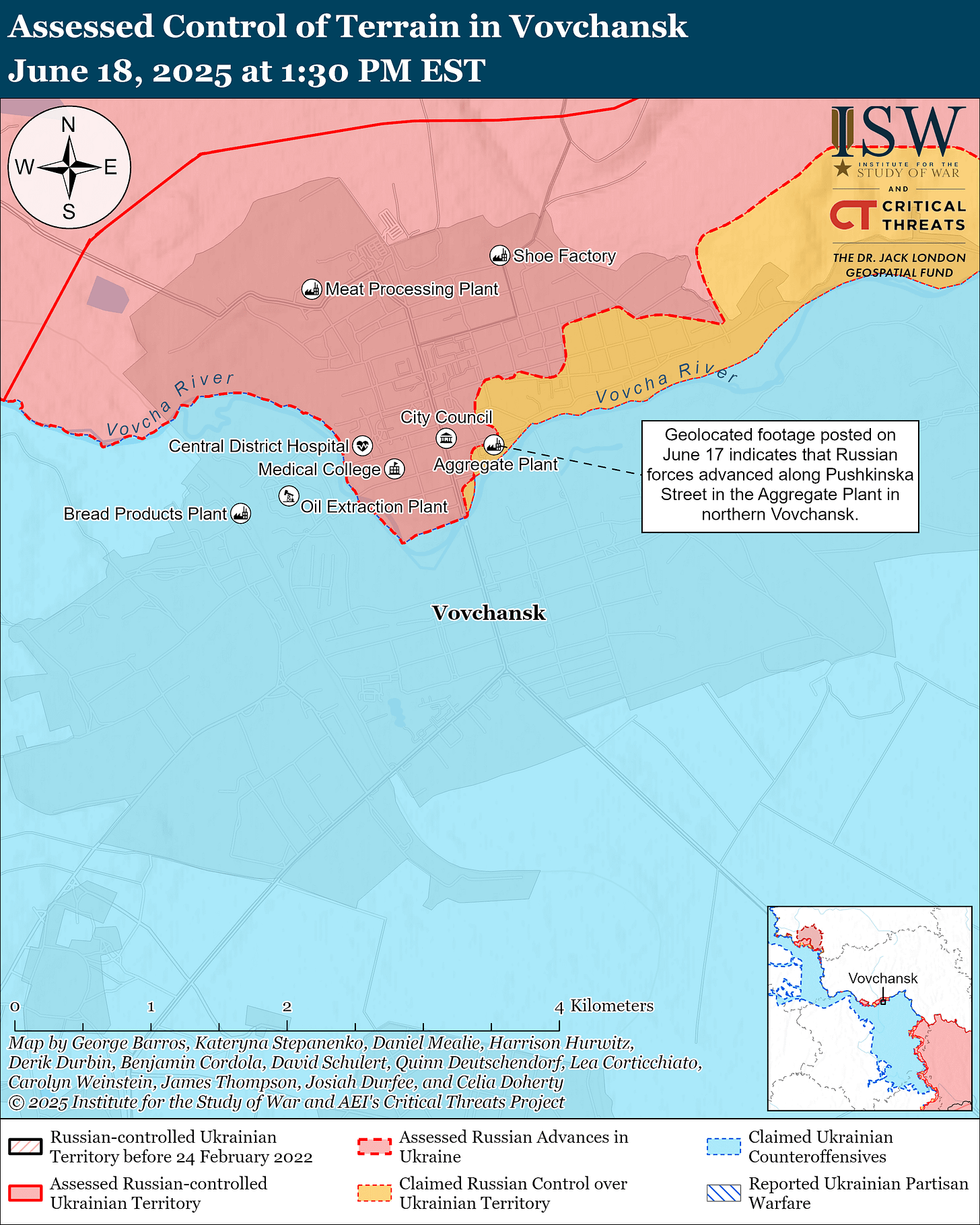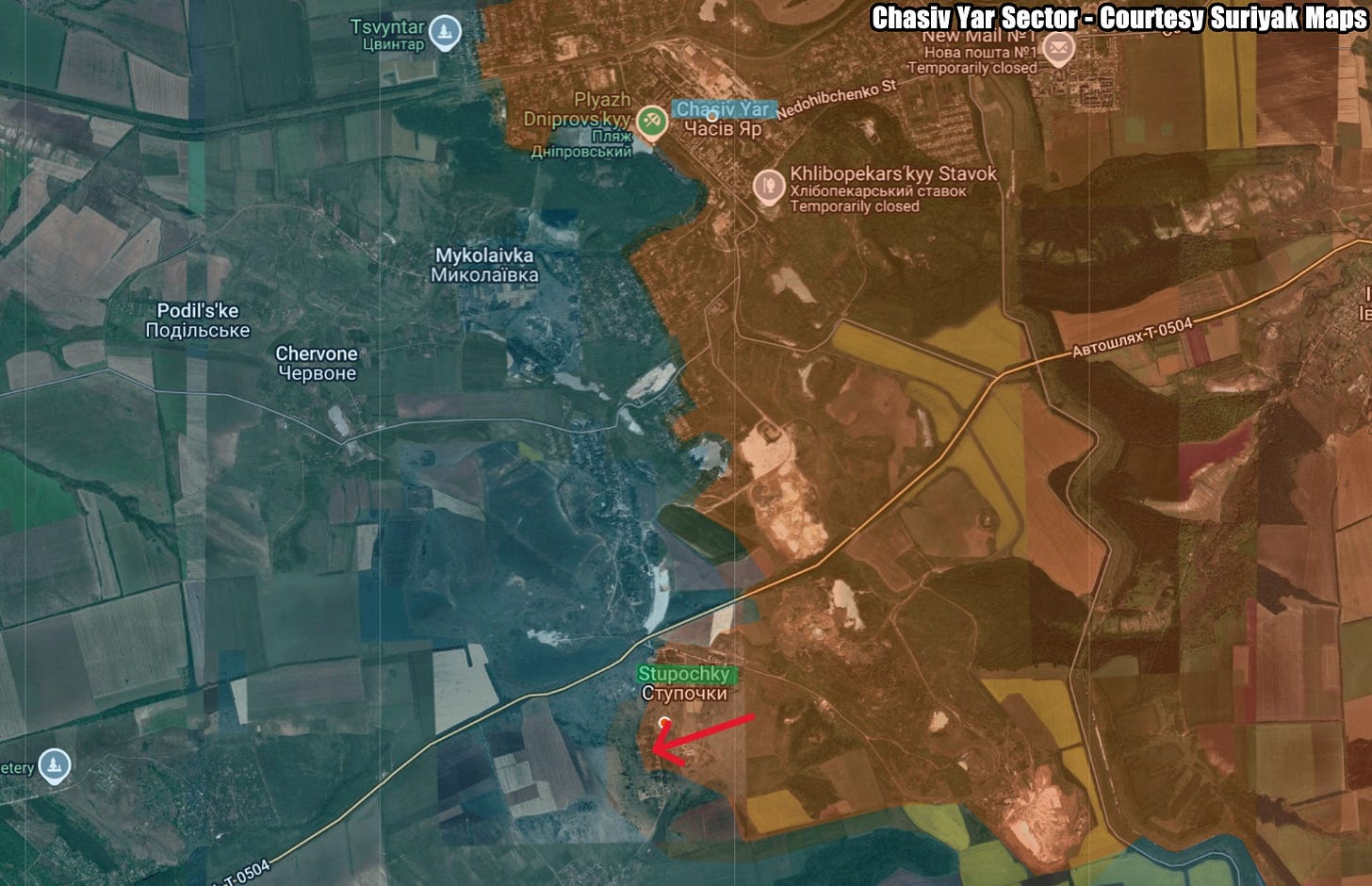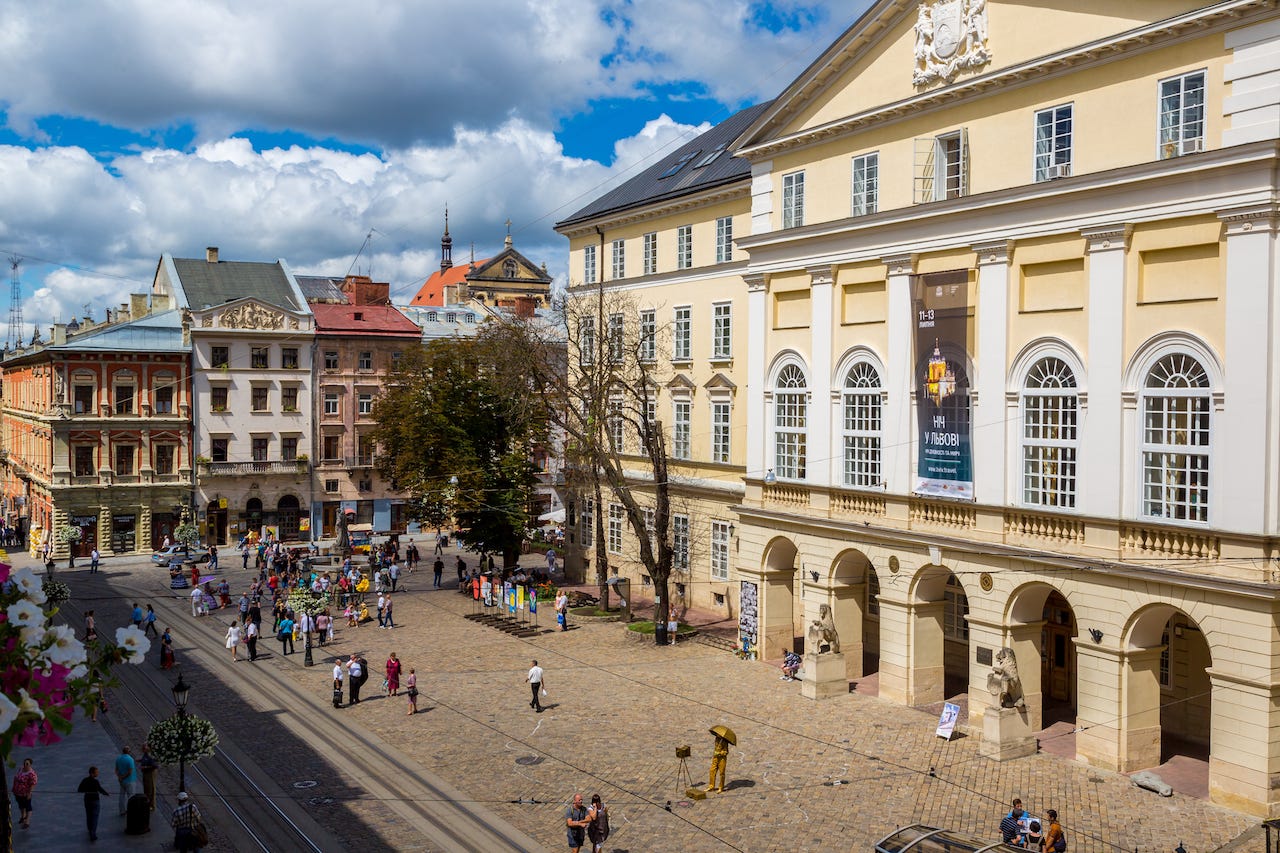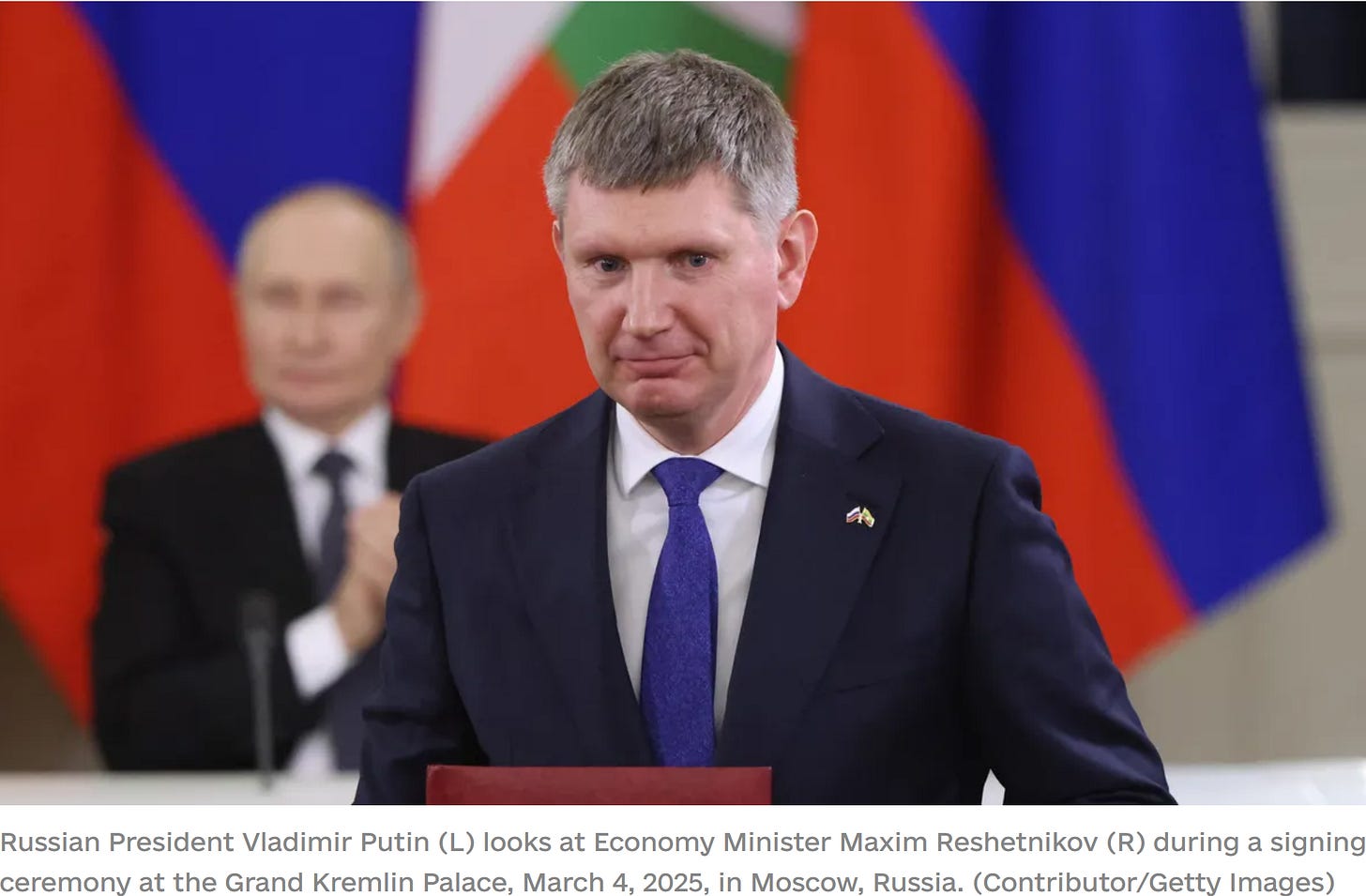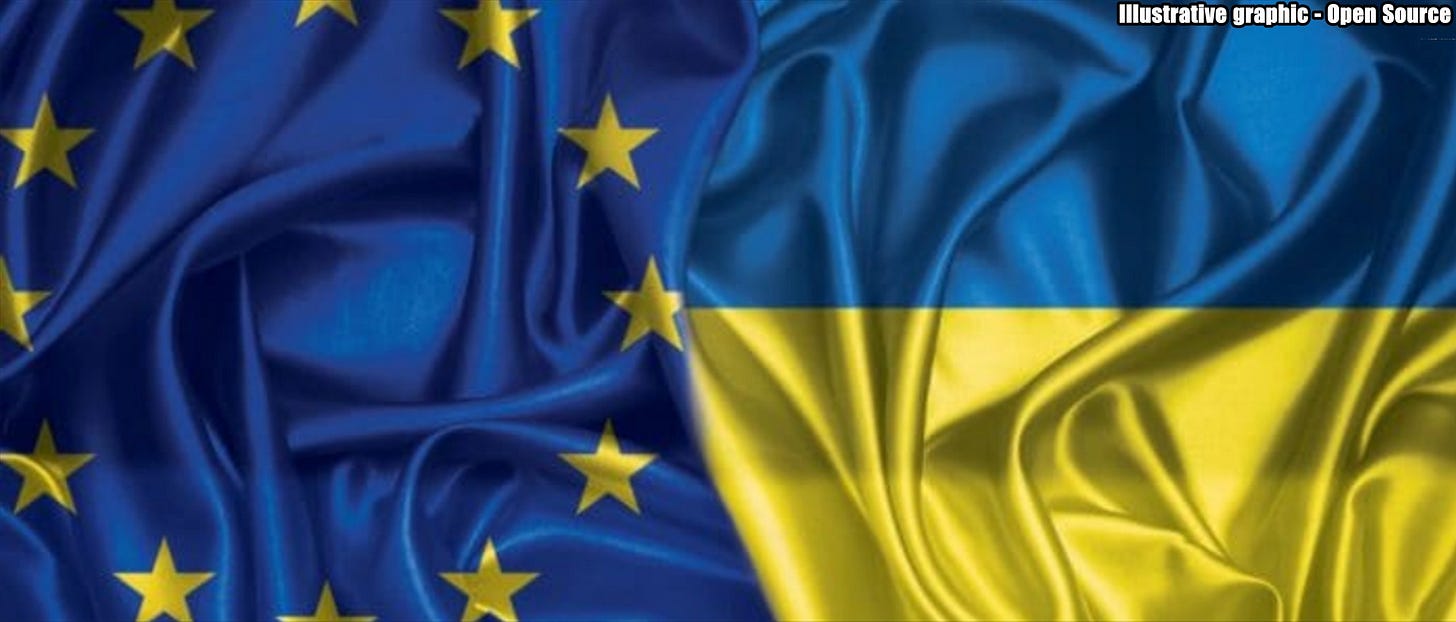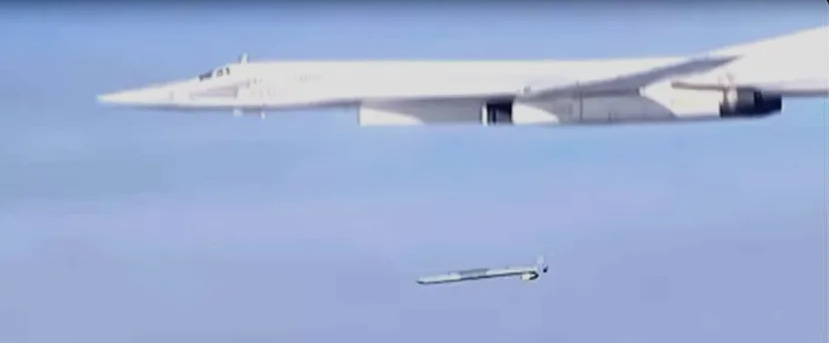Slava Ukraini! In early 2022 I began a Telegram channel aggregating news from a number of sources daily on the war in Ukraine. In June 2023 I began providing a daily draft for the Ukraine War Brief Podcast collecting news from over 70 sources daily, which formed the basis of the script. While the Podcast no longer exists I have continued to make this Brief available for my subscriberss here on Substack and anyone who wishes to keep up with the news from the war.
If you find the Brief informative I would appreciate it if you shared it with others.
All the latest news on the Russo-Ukraine War 6 days per week
ALONG THE CONTACT LINE
GSAFU Morning Report
For: Jun 19, 2025
The General Staff of the Armed Forces of Ukraine in its Operational Information update at 08:00 on Jun 19 stated that day 1212 of the full-scale invasion of the Russian Federation against Ukraine had begun.
The situation on the line of combat remains tense in some sectors. Ukrainian defenders continue to actively counteract the Russian aggressor, causing them significant losses in personnel, equipment and technology. Exhausting the enemy along the entire front line and continuing to disrupt the plans of Russian occupiers to advance deeper into the territory of Ukraine.
Over the past 24 hours, aviation, missile troops and artillery of the Defense Forces have hit 16 personnel concentration areas, weapons and military equipment, artillery and one enemy control point.
During the past day,163 combat engagements took place.
Over the past 24 hours, the enemy carried out 48 air strikes, used 3,269 attack drones and fired approximately 5,100 artillery shells across the positions of Ukrainian forces and civilians.
Air Force Daily Report
88 ENEMY UAVS DESTROYED
➖➖➖➖➖➖➖➖➖
On the night of Jun 19 (from 9:00 p.m. on Jun 18), the enemy attacked with 104 Shahed-type strike UAVs and simulator drones of various types from the directions: Millerovo, Kursk, Orel, Primorsko-Akhtarsk - Russian Federation, Chauda - TOT Crimea.
The air attack was repelled by aviation, anti-aircraft missile troops, electronic warfare and unmanned systems units, and mobile fire groups of the Defense Forces of Ukraine.
As of 08:30, air defenses have neutralized 88 enemy Shahed UAVs (and other types of UAVs) in the north, east, south, and center of the country. 40 were shot down by fire weapons, 48 were lost/suppressed by electronic warfare.
Enemy airstrikes were recorded in 6 locations.
Combat Operations in the Russian Federation
There has been no significant change in the combat environment in this sector since our last report.
The Khortytsia operational-strategic group
(Responsible for the northeastern part of Ukraine. )
Sumy Sector: Russian forces recently advanced in northern Sumy Oblast.
Geolocated footage published on Jun 16 indicates that Russian forces recently marginally advanced west of Kostyantynivka (north of Sumy City)
Kharkiv Sector: Russian forces recently advanced in northern Kharkiv Oblast.
Geolocated footage published on Jun 18 indicates that Russian forces recently advanced within the Vovchansk Aggregate Plant in northern Vovchansk (northeast of Kharkiv City).
Chasiv Yar Sector: Russian forces recently advanced in the Chasiv Yar direction.
Geolocated footage published on Jun 18 indicates that Russian forces recently advanced into southern Stupochky (south of Chasiv Yar) and likely seized the settlement.
Toretsk Sector: Russian forces recently advanced in the Toretsk direction.
Geolocated footage published on Jun 17 indicates that Russian forces recently advanced southwest of Dyliivka and seized Dachne (both north of Toretsk).
The Tavria operational-strategic group
(Responsible for the central-eastern and southeastern part of Ukraine.)
There has been no significant change in the combat environment in this sector since our last report.
The Odesa operational-strategic group
(Responsible for Kherson, Qırım, (also known as Crimea) and the Black Sea.)
There has been no significant change in the combat environment in this sector since our last report.
TEMPORARILY OCCUPIED TERRITORIES
Nothing major to report.
THE HOME FRONT
Russia kills 1, injures at least 27 across Ukraine over the past day.
Russian attacks killed at least one civilian and injured at least 27 over the past 24 hours in Ukraine, the Kyiv Independent reported citing regional officials on Jun 19.
In Kherson Oblast, nine people were injured amid heavy shelling and drone attacks on dozens of settlements, including Kherson city, Governor Oleksandr Prokudin said. Russian forces struck social infrastructure facilities, three apartment buildings, and 10 houses. A gas pipeline, an ambulance base, a fire station, and several vehicles were also damaged.
In Donetsk Oblast, 13 people were wounded in Russian strikes across the region, Governor Vadym Filashkin said.
In Dnipropetrovsk Oblast, five people were injured in morning attacks on the Nikopol district, including an 11-year-old child, Governor Serhii Lysak reported. One of the victims, a 59-year-old man, later died in the hospital, Lysak said.
In Zaporizhzhia Oblast, one person was injured, Governor Ivan Fedorov said. Over the past day, Russian forces carried out 410 strikes on 12 settlements in the oblast, including 10 air strikes and 264 drone attacks. Additional shelling from artillery and multiple launch rocket systems damaged at least 94 houses, vehicles, and infrastructure sites.
Lviv to receive EUR5 mln grant from France to reconstruct Mykolaychuk Street.
The French Development Agency (AFD) is allocating EUR5 million to Lviv for the reconstruction of part of Mykolaychuk Street, near the UNBROKEN center, and the construction of the foundation for the future tram track there, Interfax Ukraine reported citing the press service of Lviv City Council reports.
The grant agreement was signed in Lviv on June 18 by Lviv Mayor Andriy Sadovy, Chief Executive Officer of the French Development Agency Remy Rioux and French Ambassador to Ukraine Gaël Veyssière.
It is noted that the project to launch a tram to this part of Lviv involves five stages.
"The grant that we will receive in accordance with the signed agreement is intended for the implementation of the first stage of the project - the reconstruction of part of Mykolaychuk Street, including the intersection of Orlyka-Schurata Streets," Sadovy specified.
According to him, in particular, instead of two, four lanes will be arranged opposite the hospital - two for public transport, two for private transport and one more for a duplicate entrance to the hospital. A two-way bicycle path will also be arranged on the side of the medical facility, and barrier-free sidewalks will be installed along the entire length of the street. The foundation will be laid for laying tram tracks.
The second stage involves the construction of a pedestrian bridge on this site, which will connect the residential area with the hospital; the third and fourth - the laying and connection of the tram infrastructure from Horodnytska Street to the hospital area, the fifth - the laying of a tram track from the hospital to social housing on Mykolaychuk Street.
To launch the tram and ensure inclusiveness for pedestrians, the terrain will be leveled: in some locations, the street will be lowered to a level of 1.5 m to 4 m.
The street reconstruction project will soon undergo an examination and after that, approximately in October-November of this year, the first stage of work can begin. They will last about eight months.
Rioux expressed hope that the organization will become a partner of Lviv in the implementation of the next stages of this large-scale project.
"This project and our participation in it is a kind of sign of solidarity and support for all the people of Ukraine. We are participating in the first stage, but I hope that we will be partners in the subsequent phases of this project," he said.
In total, the length of the new tramline will be 2.6 km (one way).
RUSSIAN WORLD
Russia 'on the verge' of recession, Kremlin economy minister warns.
The Russian economy appears to be "on the verge of a transition to recession," the Kyiv Independent reported citing a statement by Russian Economy Minister Maxim Reshetnikov on Jun 19, adding that the next step will be decisive.
The comments underscore Russia's mounting economic challenges as it continues its all-out war against Ukraine.
"According to figures, we have a cooling stage (in the economy). But all our numbers are like a rearview mirror," Reshetnikov said at the St. Petersburg International Economic Forum when asked about Russia's economic situation.
"According to current business perceptions, we are already, it seems, on the verge of a transition to a recession," the minister added. Reshetnikov clarified that recession is not inevitable and that "everything depends on our decisions."
Russia has faced soaring inflation during its invasion of Ukraine, driven by record wartime spending. This forced the central bank to set one of the highest key interest rates in decades, hurting private investments in non-defense-related sectors.
Facing government pressure, the central bank slashed the interest rate from 21% to 20% earlier this month.
Reshetnikov himself urged the central bank to cut rates in order to boost growth, aiming to achieve a 3% growth target set by Russian President Vladimir Putin.
Russia has been forced to slash key projects across various sectors in the face of an economic slowdown, brought on in part by plummeting oil prices. Major Russian exporters have also cut down on rail shipments of metals and oil products, even beyond earlier projected reductions.
After some positive signals earlier in 2025 due to U.S. President Donald Trump's outreach to Moscow and hopes for a ceasefire, more recent reports again indicate a sharp slowdown in Russia's economic growth.
Analysts have connected this development to the central bank policies, sanctions, low oil prices, supply difficulties, and high inflation.
Russia Ramps Up Borrowing as Oil Revenues Falter and War Spending Soars.
Russia’s Finance Ministry is aggressively increasing its borrowing in a bid to cover growing fiscal gaps and hedge against an increasingly uncertain economic future as military spending surges and oil and gas revenues slump. The Moscow Times reports.
Six months into 2025, the ministry has already borrowed more than 2.7 trillion rubles (approximately $35 billion), or 56% of its annual borrowing plan.
This week alone, it raised 195 billion rubles (around $2.5 billion) through two new issues of government bonds, known as OFZs, hitting its second-quarter fundraising target of 1.3 trillion rubles (about $16.9 billion).
Russia is paying steep yields — 15.2% on six-year bonds and 15.5% on 11-year debt — amid high interest rates aimed at taming inflation.
The Finance Ministry has prioritized fixed-rate bonds to avoid future increases in debt servicing costs, even though they lock in high rates regardless of changes in monetary policy..
Conditions have recently turned more favorable for borrowing. The Feb. 12 phone call between Presidents Vladimir Putin and Donald Trump stirred fleeting hopes of peace in Ukraine, drawing risk-seeking investors back into the Russian bond market.
That momentum continued into March, as expectations of declining inflation and potential interest rate cuts spurred additional demand.
For now, the ministry is capitalizing on the window of opportunity.
By front-loading its borrowing now, the Finance Ministry is building a fiscal buffer in case markets turn against it later this year, analysts at Gazprombank said.
Still, risks are mounting. In May, the government approved an additional 826 billion rubles (around $10.7 billion) in spending, funded by expected windfalls in non-oil and gas revenues. But economic growth is slowing and inflation is cooling faster than anticipated, raising concerns that those revenues may not materialize.
The 2025 budget assumes inflation at 7.6%, but Economic Development Minister Maxim Reshetnikov said the forecast will be revised downward in August.
Analysts at MMI warn that government expenditures could exceed targets by 1.7 to 2.7 trillion rubles (roughly $22.1 to $35.1 billion), pushing the deficit 2 to 3 trillion rubles ($26 to $39 billion) beyond current projections.
The official deficit has already tripled to 3.8 trillion rubles (about $49.4 billion), and by the end of May, it had reached 3.4 trillion (approximately $44.2 billion).
The outlook for oil and gas revenues — traditionally the backbone of Russia’s budget — has also darkened. The Finance Ministry has slashed its forecast by 2.6 trillion rubles (about $33.8 billion), citing lower global oil prices and a stronger ruble.
If revenues fall below the baseline level, the government plans to dip into the National Wealth Fund, with 447 billion rubles (roughly $5.8 billion) earmarked to fill the gap.
The fund’s liquid reserves currently stand at 2.8 trillion rubles (around $36.4 billion), and officials appear intent on conserving them as long as possible.
Under Russia’s fiscal rule, which was in place before the pandemic, shortfalls in oil and gas revenues caused by a stronger ruble should be covered through additional borrowing rather than tapping the wealth fund.
According to Bloomberg Economics’ Russia and CEE Economist Alexander Isakov, every one-ruble appreciation in the average annual dollar exchange rate adds roughly 100 billion rubles (about $1.3 billion) to the government’s borrowing needs.
Still, adherence to the rule has been flexible, Isakov said.
The Economic Development Ministry projects an average exchange rate of 94.3 rubles to the dollar this year, rising to 98.7 by December. A Central Bank survey of more than 30 analysts predicts a stronger ruble, averaging 91.5 per dollar — implying even deeper potential revenue losses for the government.
RELATED INTERNATIONAL NEWS
Czech Foreign Ministry exposes Russia’s fake diplomacy.
Russia has been sabotaging peace negotiations with Ukraine for 100 days, the Czech Foreign Affairs Ministry (MFA) wrote on social media on Jun 19.
The Czech MFA highlighted that Ukraine has clearly demonstrated its readiness for peace talks.
“Ukraine has clearly shown it's ready for peace talks," the statement read. "It accepted an unconditional ceasefire proposal 100 days ago. And Russia? Sabotage, trolling, absurd demands, and ongoing attacks on civilians."
The MFA stressed that the Kremlin does not want peace, and maximum pressure must be put.
Earlier, Ukraine’s Foreign Minister Andrii Sybiha, in response to Russian dictator Vladimir Putin’s claims about alleged readiness for talks and desire to “end the war,” reminded the public that it is Russia who has been ignoring a U.S. proposal for a 30-day ceasefire for 100 days now.
On Jun 19, Putin claimed that the next round of negotiations between Russia and Ukraine might take place after June 22.
Before that, Putin said he was ready to meet with Ukrainian President Volodymyr Zelenskyy at the final stage of the negotiation process — but refused to recognize him as a legitimate representative to sign any agreements.
EU devises scheme to squeeze more profit from Russian frozen assets.
The European Union is looking to extract billions of extra euros from frozen Russian assets by moving them into riskier investments — via a plan that would increase aid to Ukraine while avoiding accusations of stealing Moscow's money, POLITICO reports.
The EU executive is considering transferring almost €200 billion of frozen Russian state assets held in Belgium into a new, riskier investment fund that would pay out higher interest, four officials with knowledge of proceedings told POLITICO.
The goal is to generate more profits to help keep Ukraine’s war-battered economy afloat amid U.S. president Donald Trump’s threats to halt funding. The assets were frozen in 2022 in response to Russia's full-scale invasion of Ukraine.
However, the move would stop short of confiscating the Russian assets altogether — which is opposed by several EU states including Germany and Italy over financial and legal concerns.
By only spending the interest and leaving the underlying capital untouched, the EU hopes it can avoid accusations of breaching international law.
Members of the G7 group of industrialized countries last year agreed to give Ukraine €45 billion generated by investing the immobilized sovereign assets.
The EU’s €18 billion share of the G7 loan, however, will be entirely paid out by the end of the year ― raising questions on how Ukraine’s funding needs will continue being met in 2026.
Finance ministers from the EU’s 27 countries will kickstart these discussions on Thursday at an informal dinner in Luxembourg.
“It is important that we hear from the Commission on the available options, especially regarding the potential use of frozen Russian assets and further steps regarding the sanctions regime,” the rotating Polish Council presidency, which organized the dinner, wrote in the invitation letter to ministers seen by POLITICO.
As a potential workaround, EU officials are considering transferring the assets from Euroclear in Belgium to a “special purpose vehicle” under the EU's umbrella.
The main advantage of creating the new fund quickly is that the assets could then be assigned to riskier investments capable of generating much higher returns for Ukraine. The officials did not say exactly what sort of investments these might be.
Another potential advantage is that it could prove a useful shield against the risk that Hungary might veto the sanctions renewal and effectively hand back the money to Russia.
EU officials are looking for ways to set up the new fund by simple majority — as opposed to unanimity — to sideline Hungarian Prime Minister Viktor Orbán.
The EU is looking for creative solutions as its central €1.2 trillion cash pot — which governs all public spending — is overstretched and the new budget will only come into force in 2028.
MILITARY & TECH
Ukrainian team goes to extraordinary measures to combat Russia’s bombing campaign.
David Axe, a reporter for Forbes who does in depth coverage on the war in Ukraine recently published a fascinating article for the Trench Art Substack account about an intriguing operation by Night Watch, the Ukrainian electronic warfare team.
Night Watch began as a disorganized gaggle of volunteers in the chaotic early hours of Russia’s wider invasion of Ukraine in February 2022. It quickly gelled as a team—and began searching Ukraine’s old Soviet-era weapons factories for old-timers with the know-how to defeat Russia’s missiles and drones. This combination—eager young volunteers and crusty old veterans—is the human resources recipe for Night Watch’s best missile and drone jammers.
“The war for me and my team began in February 2022,” Night Watch’s leader, who goes by the nom de guerre “Alchemist,” told Trench Art. “Ordinary civilians, we joined the Territorial Defense [Forces] to protect the homeland. Having no military education, we took on soldiering duties.”
But their real expertise was organizational. “Each of us brought significant experience from civilian work or business, which proved advantageous,” Alchemist said. “As territorial defense fighters, we were less familiar with obtaining weapons or filing requisitions—but we excelled at sourcing or even manufacturing them using volunteer funds or personal resources.”
Night Watch’s original 10 members quickly identified a problem they could solve. “From the war’s outset, the enemy widely deployed cruise missiles against Ukraine. We saw these as the primary threat to our logistics [and] cities in the war’s early months. That is when we began searching for countermeasures.”
in 2023, recruited a Chinese spy to steal critical technology associated with Russia’s Shahed explosive drones.
You can read more at Trench Art’s Substack.
That’s it for today’s Brief folks if you would like to keep up with events in Ukraine daily please consider subscribing, it’s free!








